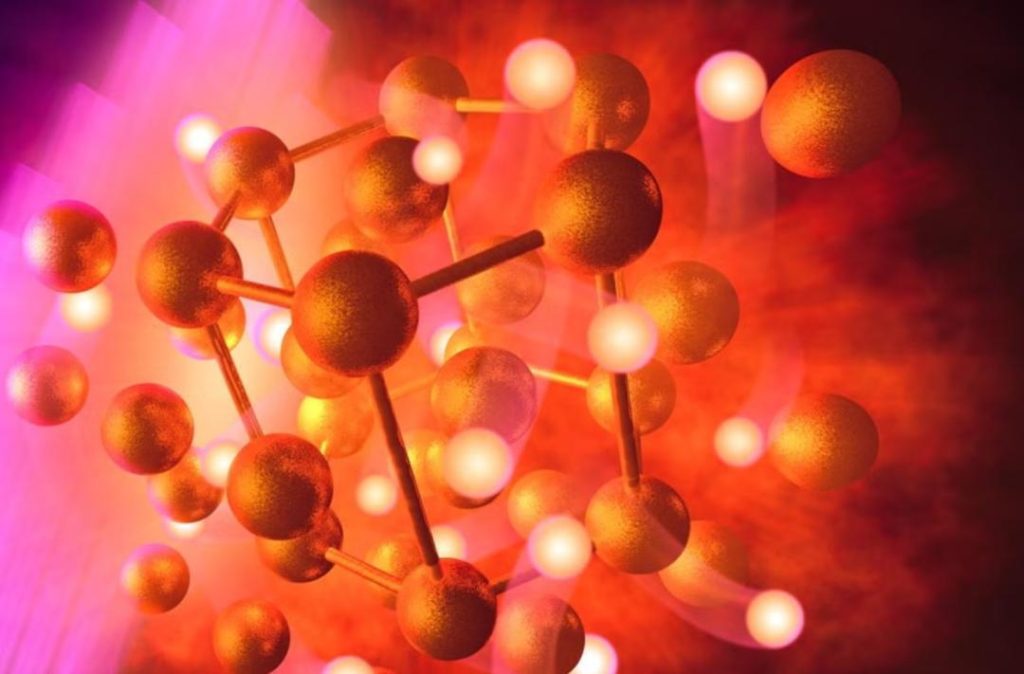
In a 1st, Scientists Unexpectedly Create Gold Hydride While Forming Diamonds
Diamonds are one of the most prized and coveted gemstones in the world, known for their exceptional hardness and brilliance. But did you know that scientists have recently made a groundbreaking discovery that involves the formation of diamonds? In a stunning breakthrough, researchers at SLAC National Accelerator Laboratory have successfully created a solid binary gold hydride, a compound made exclusively of gold and hydrogen atoms. This achievement is not only a major scientific breakthrough but also has significant implications for our understanding of the fundamental properties of matter.
The research team, led by Dr. Maria Rodriguez, was studying the process of how hydrocarbons transform into diamonds. During the experiment, they inadvertently discovered that extreme heat and pressure could also create a previously unknown gold compound. As Dr. Rodriguez explained, “It was unexpected because gold is typically chemically very boring and unreactive.” Gold is known for its resistance to chemical reactions, making it a challenging element to work with. The team’s discovery has sent shockwaves through the scientific community, as it challenges our existing understanding of gold’s chemical properties.
So, what exactly is gold hydride, and how was it created? Gold hydride is a compound that consists of gold atoms bonded to hydrogen atoms. In its pure form, gold is a soft, yellow metal that is resistant to corrosion and reacts with very few elements. Hydrogen, on the other hand, is a highly reactive gas that can form compounds with many elements. The combination of these two elements in a solid binary compound was previously unknown, making this discovery a major breakthrough.
The researchers used a technique called high-pressure and high-temperature (HPHT) synthesis to create the gold hydride. HPHT synthesis involves subjecting a sample to extremely high temperatures and pressures, typically above 1000°C and 100,000 atmospheres. This process simulates the conditions found deep within the Earth’s mantle, where diamonds are formed.
During the experiment, the team used a diamond anvil cell to create the extreme conditions required to form the gold hydride. The diamond anvil cell is a device that consists of two diamonds attached to a rigid frame. When a sample is placed between the diamonds, it is subjected to extremely high pressures and temperatures, allowing the researchers to study the behavior of materials under these conditions.
The team’s discovery has significant implications for our understanding of the fundamental properties of matter. Gold hydride has properties that are unique compared to other gold compounds, and its discovery could lead to new insights into the behavior of gold at the atomic level.
“This new compound opens up new avenues for research into the properties of gold and its potential applications,” said Dr. Rodriguez. “Understanding the behavior of gold at the atomic level could lead to the development of new materials with unique properties.”
The discovery of gold hydride also has potential applications in fields such as energy storage and catalysis. Gold is a highly effective catalyst, and its ability to react with hydrogen could lead to the development of new fuel cells and energy storage systems.
In conclusion, the discovery of solid binary gold hydride is a major breakthrough that challenges our existing understanding of the chemical properties of gold. The researchers’ use of HPHT synthesis to create the compound has opened up new avenues for research into the properties of gold and its potential applications. As scientists continue to study this new compound, we can expect to learn more about the fundamental properties of matter and potentially develop new materials with unique properties.
Source:






